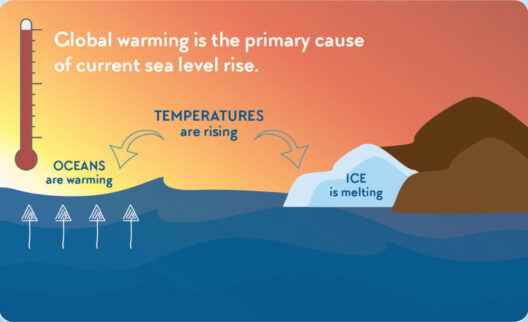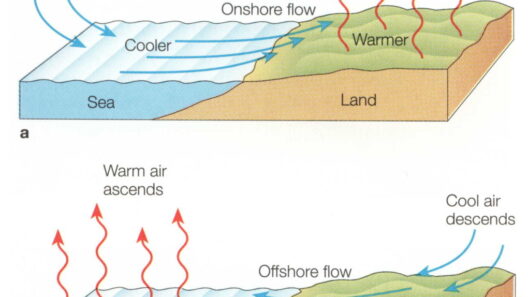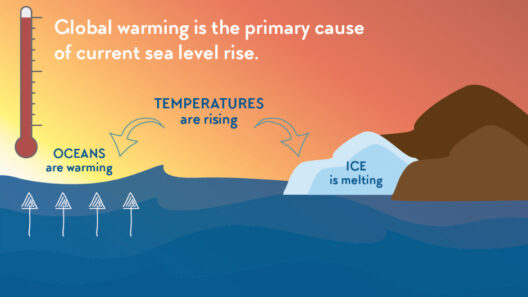When contemplating the planet we inhabit, one may whimsically pose the question: “Is Earth experiencing a mood swing today, or is it merely the incessant flux of climate?” This playful provocation serves as an opportunity to delve into the complexities of climate science, anthropogenic influences, and the intricate statistical models that endeavor to predict changes in our atmospheric dynamics.
Climate can be succinctly defined as the long-term pattern of temperature, humidity, wind, and precipitation in a specific area. Unlike weather, which represents the immediate or short-term atmospheric conditions, climate embodies the overarching trends shaped by both natural variables and human activities. The distinction is critical, as public discourse often conflates the two, leading to misunderstandings regarding climate change and its broad implications.
As we embark on this exploration, envision global climate as a vibrant tapestry woven from myriad threads, each representing different factors: geographic locations, oceanic currents, solar radiation, and even volcanic activity. Each thread influences the ecosystem and human endeavors, dictating agricultural yields, biodiversity, and urban planning. However, the crux of the challenge lies in understanding how these ‘threads’ interact and are disrupted by human intervention.
The primary contributor to contemporary climate fluctuations can be traced back to greenhouse gas emissions—primarily carbon dioxide and methane—which have been amplified by industrial progress and deforestation. Since the dawn of the Industrial Revolution, a substantial increase in these gases has led to an unprecedented rise in Earth’s average temperature. The potential ramifications are profound; they include melting ice caps, rising sea levels, and an increase in the frequency of extreme weather events. Each of these phenomena serves as a vivid illustration of climate’s increasingly erratic disposition.
Why should individuals care about these developments? The answer lies not only in the aesthetic appreciation of nature but in a grounded concern for the socio-economic pressures ignited by climate aberrations. Droughts may obliterate harvests, while floods ravage urban settlements, thrusting communities into socioeconomic turmoil. For instance, the stringent implications of climate change are not just a worry for future generations; they are felt palpably today. The looming challenges remind us that while Earth’s mood shifts may seem whimsical, the stakes are considerably high.
Moreover, it is crucial to acknowledge the disparities in climate impact—developed nations often bear a larger share of the responsibility for greenhouse gas emissions, while developing nations frequently endure the brunt of its consequences. This creates a moral obligation to address environmental injustices, emphasizing equity in our climate action plans. Indeed, climate change knows no boundaries; it is a profound challenge that tests the resilience and adaptability of human society.
The scientific community has responded to these challenges with a variety of methods aimed at understanding and predicting climate patterns. Robust climate models are employed to simulate future environmental scenarios. These models are continuously refined, yet their predictions are contingent upon the accuracy of the data input. The uncertainties and variables involved underscore the complexity of climate systems, reminiscent of a sophisticated game of chess where each move impacts countless potential outcomes.
Public engagement with climate science is imperative. Knowledge dissemination serves as a powerful tool in combating apathy and fostering a culture of environmental stewardship. Educational initiatives that facilitate a nuanced comprehension of climate dynamics are pivotal in cultivating a society equipped to confront the obstacles ahead. Visual representations, such as infographics comparing climate and weather, are effective in distilling complex information into digestible formats, thus enhancing public understanding.
Addressing climate change also necessitates innovative solutions across various sectors. Renewable energy technologies, sustainable agriculture practices, and urban planning incorporating green infrastructure are just a few approaches that advocate for a marked reduction in carbon footprints. Transitioning to a low-carbon economy not only mitigates climate change but also engenders economic opportunities, job creation, and improved public health.
Nonetheless, the journey toward climate resilience is fraught with obstacles. Adaptation strategies require substantial investments and political will. Furthermore, emerging technologies such as carbon capture and storage hold promise but also raise ethical questions about their deployment and potential ramifications. The complexity of climate solutions demands a multidisciplinary approach, integrating scientific expertise, community engagement, and governmental policy.
In summary, the phrase “Climate in a Sentence” invites contemplation of Earth’s multifaceted identity, marked by cyclical changes akin to mood swings. This metaphor prompts a broader philosophical reflection on our relationship with the planet. How do we recognize and respond to these shifts? Are we equipped to tackle the implications of an increasingly capricious climate? The answers will dictate the narrative of our environmental future.
Indeed, the playful question serves not merely as an icebreaker but as a clarion call to action. As we navigate these profound challenges, a collective effort is paramount. Resilience is not merely a response; it is a mindset that we must cultivate, fostering a sustainable relationship with our planet amidst the intricate dance of climate variability.





